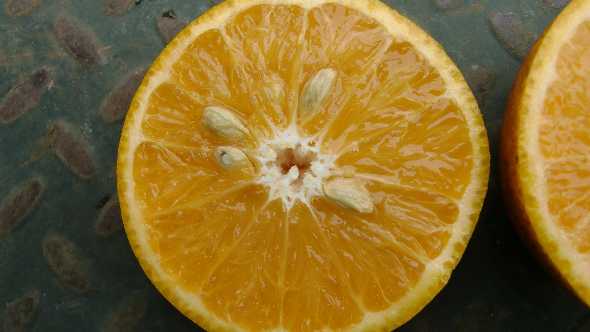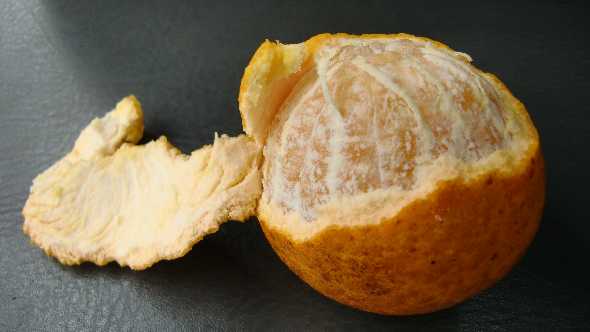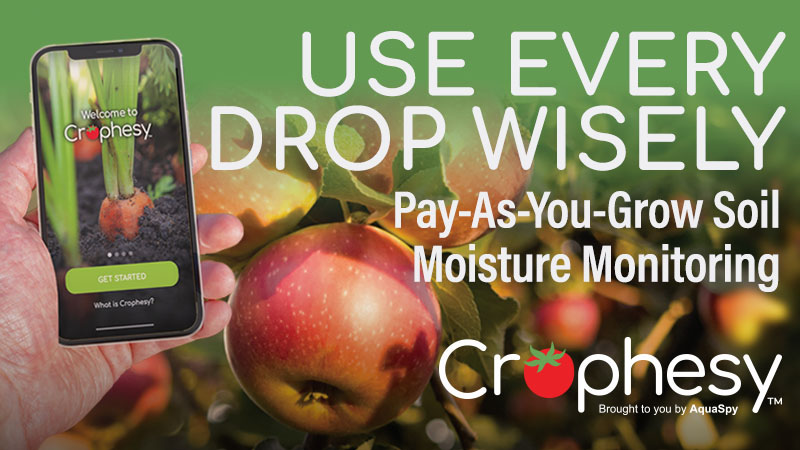Scientists Center On Sweet Spot For Processed Oranges
New Varieties Development & Management Corp. (NVDMC) supports a range of variety development and evaluation activities within the UF/IFAS and USDA-ARS breeding programs. A significant portion of these projects are directed toward sweet orange development.

Photo courtesy of USDA-ARS
Because the development of sweet orange cultivars differs from the breeding of tangerine type fruit, and because the fruit are processed for industrial production of orange juice products, it tends to be a much longer and more complex process.
Tremendous advances are being made in the development of new sweet orange and sweet orange-like cultivars. Recent field days and variety displays have certainly piqued the interest of the processed sector and enhanced the overall awareness of progress in this area.
This month’s article will highlight unique approaches and techniques being employed and emphasize the importance of maintaining support of this critical research.
Processed orange variety development is currently centered in three primary areas:
1. Somaclonal variation of true sweet oranges – While this approach typically focuses on improved quality and yield, all plants also are observed for disease tolerance.
2. Recreating the sweet orange by tapping into its ancestral lineage – Genome sequencing has revealed the “blueprint” of sweet orange, and this valuable information can be used to recreate sweet oranges, which are improved for disease resistance.
3. Evaluating unique citrus hybrids that exhibit the appearance, flavor, color, and aroma of sweet orange, though their lineage may differ significantly from a true sweet orange – This method has produced a number of interesting selections that appear to demonstrate varying levels of HLB tolerance — requiring further study.
USDA-ARS
Sweet orange cultivars range widely in traits such as time of ripening and juice quality, but individual cultivars arose through mutations selected over generations (possibly millennia) of clonal propagation so they are almost identical in their genetics. Sweet orange cultivars are the most widely planted tree fruits in the world, dominate the Florida citrus industry, have traits that are much-appreciated by consumers, and commercial producers/processors have a hard-won understanding of optimal handling. Unfortunately, sweet orange also has some serious problems, especially high susceptibility to HLB. The USDA sweet orange breeding effort has focused on developing hybrids with sweet orange-like characteristics and improved HLB tolerance. Parents being used in this process include a range of USDA advanced selections as well as commercial varieties. This project will tap into a diverse genetic lineage to produce fruit that in some cases is indistinguishable from sweet orange.
USDA-ARS released Ambersweet in 1989, which was noteworthy in its similarity to sweet orange. Evaluations of aroma/flavor compounds through taste panels resulted in official acceptance of Ambersweet as a “sweet orange” and it was widely planted in Florida, but suffered from low productivity and is now little grown. However, a new generation of sweet-orange-like hybrids are under evaluation, some showing improved tolerance to HLB. Volatile profiles of five of the best hybrids were recently compared to Ambersweet and Hamlin at two harvest timings. The volatiles in the hybrids were extremely close to those of Hamlin, closer than in Ambersweet, and had much better juice color with similar date of maturity. It is likely these hybrids could be legally designated as sweet oranges.
One hybrid peels much more easily than sweet orange, making it attractive as a potential fresh fruit cultivar or for dual processing/fresh use. Trees of these advanced sweet-orange-like selections have been propagated for further testing with many planted at the USDA farm in Ft. Pierce and at the A. H. Whitmore Farm near Leesburg. Replicated trials will be planted comparing the new hybrids to standards at grower sites throughout the major Florida citrus areas.
To date, the ARS team has produced almost 4,000 more unique hybrids that are specifically directed at achieving sweet orange-like characteristics. Each of these will be screened for tolerance to HLB and their ability to produce a commercially acceptable crop with minimal drop. Most of these hybrids already are in the field, with many more growing in the greenhouse for planting this year.
UF/IFAS Plant Improvement Team
UF/IFAS sweet orange breeding efforts focus on increased yields for growers and improved quality for juice. As HLB has pervaded Florida citrus, including the UF/IFAS breeding program and the germplasm collections, UF/IFAS breeders are observing degrees of tolerance in some new material. Although UF/IFAS’ breeding focus has been and will continue to be on product quality improvements, the selection for tolerance of HLB is inherently now a part of the breeding process.

Photo courtesy of USDA-ARS
UF/IFAS’ Plant Improvement Team, based at the Citrus Research and Education Center in Lake Alfred, has been working for many years to meet the new variety needs of the sweet orange processing business in Florida, which comprises by far the largest segment of the industry. As the consumption of FCOJ-based products has declined, the NFC segment of the marketplace has grown substantially, and with this growth has come the need for a range of cultivars with improved juice quality that mature throughout the season.
New orange varieties have been created and released and are in the process of commercialization now, which will provide significant quality advantages for the Florida juice industry. Some of these varieties have caught the attention of major juice companies, but there are others still in the developmental and testing phase.
It goes without saying that citrus variety improvement is a continual process, one that builds successively on the work already undertaken, and the materials developed and refined. By its very nature, variety enhancement requires many years for program building, and accumulated knowledge and experience to develop approaches to hasten the desired outcome. Aware of the need to improve sweet orange juice products, UF/IFAS breeders have developed and tested improved sweet orange varieties to meet the needs of the NFC product lines.
Beyond traditional breeding techniques, the UF/IFAS team has been exploiting the phenomenon of somaclonal variation, which is found among citrus trees having gone through some form of tissue culture cycle. This has already led to the release of Valquarius and Valenfresh, two new sweet orange varieties with Valencia fruit quality, but earlier or later maturity than standard Valencia. The December fruit display, held in cooperation with NVDMC, featured two new early Valencia oranges that have true Valencia quality characteristics a full three months ahead of typical Valencia maturities. A new generation of sweet orange somaclones has been produced and superior lines have been selected; these are now planted in commercial trials and some will be released in the coming year. Finally, the team has used irradiation to develop seedless midsweet oranges, which might see dual-purpose use in the industry; the best of these already are approved for release.
A New Twist
The UF/IFAS Plant Improvement Team has not limited its imagination to the known and traditional categories of citrus fruit. They have made many new hybrid families containing individuals that possess truly unique characteristics. For example, they have created a collection of hybrids, some of which resemble sweet oranges, but differ significantly by being easily peeled, or with much deeper peel and flesh color. Others in this new collection feature interesting and desirable flavor profiles combining the best of orange and mandarin. Some of these hybrids clearly have fresh potential, while others are attracting the interest of the processed sector. The goal has been to improve within the traditional categories and beyond, to expand the “likeability” base of Florida citrus fruit and juice products, as well as to improve productivity and profitability for all segments of the industry.
Variety Development Funding
NVDMC has funded conventional variety development efforts since 2006. This funding is specifically directed to funding gaps not covered by other sources. However, base funds to support the development of new sweet orange cultivars were supported previously by intrastate sources. Currently, however, the significant challenges associated with the spread and impact of HLB has led essentially to an erosion of financial support for new scion development research. What is perhaps the most ironic aspect of the funding challenge is that the rapid and vast expansion of genetic diversity, made possible only through long-term support of conventional variety development, has produced a collection of citrus rootstock and scion selections demonstrating a range of tolerance to HLB. Absent of this work, grower options would be far more limited today. It is imperative that base funds continue to support variety development efforts — through whatever source available. This is currently viewed as a Florida issue, but Florida is in many ways plowing ground that will have a long-term impact on American citrus production. This is larger than Florida.










